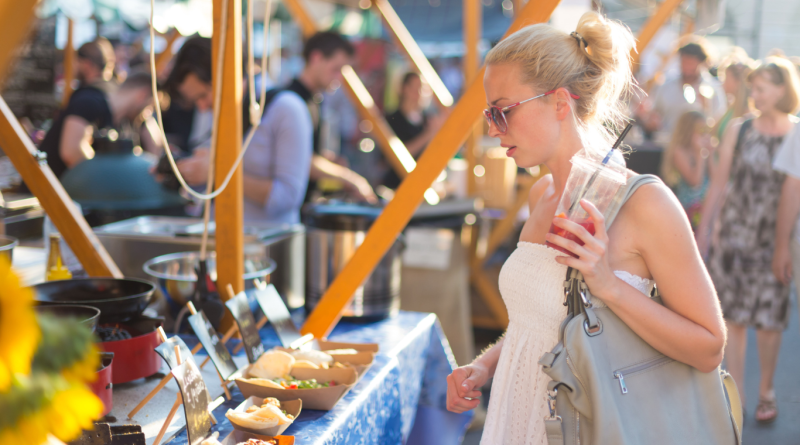Top Food Festival Trends That Defined 2024
As 2024 comes to a close, food festivals around the world have left an indelible mark on the culinary scene. From promoting sustainability to embracing cultural diversity, these festivals were more than just gatherings for food lovers—they became platforms for innovation and connection.
This year, several trends stood out, showcasing how food festivals evolved to meet the tastes and values of their audiences.
Here’s a roundup of the seven key trends that defined food festivals in 2024.
1. Plant-Based and Vegan Options Take Center Stage
In 2024, plant-based eating reached new heights at food festivals. Vegan options weren’t just an afterthought—they became the main attraction. This trend catered to the growing number of attendees seeking ethical, environmentally friendly, and health-conscious food choices.
Highlights:
- Record-breaking vegan festivals: Events like Vegan Camp Out saw an unprecedented surge in attendance, solidifying its reputation as one of the biggest vegan festivals globally.
- Mainstream adoption: Even traditional food festivals dedicated significant sections to plant-based vendors, ensuring inclusivity.
- Innovative dishes: From vegan barbecue ribs to plant-based sushi, festivals pushed boundaries in flavor and creativity.
The rise of veganism reflects a shift in consumer priorities, emphasizing sustainability and health while celebrating culinary ingenuity.
2. Fusion and Cross-Cultural Culinary Innovations
Food festivals in 2024 showcased how the blending of diverse culinary traditions can create entirely new, exciting experiences. Fusion cuisine moved beyond novelty to become a core theme for many events.
Examples of Fusion Cuisine:
- Korean-Mexican tacos combining bulgogi with tortillas.
- Japanese-inspired Italian pasta dishes featuring miso and soy sauce.
- African-inspired tapas, merging bold flavors into bite-sized portions.
The Epcot International Food & Wine Festival at Disney World epitomized this trend, with marketplace stalls offering creative takes on traditional recipes.
3. Sustainability as a Core Value
In 2024, sustainability moved from being a trend to a standard. Festivals embraced eco-friendly initiatives to reduce their environmental impact while educating attendees about green practices.
Key Initiatives:
- Zero-waste events: Festivals adopted reusable utensils, biodegradable packaging, and food-waste composting.
- Local sourcing: Ingredients sourced from nearby farms helped lower carbon footprints while celebrating regional produce.
- Educational workshops: Events like the Future of Food Festival in London featured sessions on sustainable cooking and farming practices.
Sustainability isn’t just a feel-good factor—it’s a necessity for food festivals moving forward.
4. Interactive Culinary Adventures
Passive food-tasting experiences were replaced with hands-on activities in 2024. Attendees were eager to learn, participate, and immerse themselves in the food-making process.
Popular Activities:
- Cooking workshops led by celebrity chefs.
- Tasting flights paired with expert talks, such as wine and cheese pairings.
- Immersive dining setups where every course told a story.
Events like the Disney California Adventure Food & Wine Festival highlighted how interactive programming can elevate a festival’s appeal, drawing families and food enthusiasts alike.
5. Celebration of Local and Artisanal Goods
Supporting local vendors and showcasing regional flavors became a cornerstone of food festivals in 2024.
What Made It Special:
- Artisanal goods: From handcrafted cheeses to small-batch hot sauces, festivals became a haven for discovering unique products.
- Regional authenticity: Events like the Ludlow Food Festival celebrated the culinary heritage of their locales, shining a spotlight on local producers.
- Community focus: These festivals fostered connections between attendees and the artisans behind the products.
This emphasis on local culture brought a personal, heartfelt touch to festivals, distinguishing them from large, impersonal events.
6. The Health-First Approach
Wellness and food collided in 2024, with festivals featuring menus designed to nourish both body and soul. Health-conscious attendees found a wealth of options that balanced flavor with functionality.
Key Trends:
- Superfoods: Dishes featuring turmeric, chia seeds, and spirulina were everywhere.
- Gut-friendly foods: Fermented items like kimchi, kombucha, and sauerkraut became festival staples.
- Allergen-free options: Gluten-free, nut-free, and dairy-free items ensured inclusivity for all dietary needs.
By prioritizing health, food festivals broadened their appeal while reinforcing the idea that great food can also be good for you.
7. Technology and Social Media Take Over
Technology played a significant role in shaping food festivals in 2024. From how people navigated events to how they shared their experiences, digital innovation was key.
Tech Highlights:
- Festival apps provided real-time updates, digital menus, and cashless payment options.
- Social media platforms, especially TikTok, influenced festival offerings with viral food trends like pickle-flavored items or giant fried treats.
- QR codes replaced physical brochures, reducing waste and streamlining event information.
These advancements not only improved the attendee experience but also allowed festivals to reach a wider audience through digital engagement.
Food festivals in 2024 were a melting pot of innovation, sustainability, and inclusivity. As the year ends, these events have proven that they are more than just celebrations of food—they are reflections of our evolving values and cultural priorities.
From embracing plant-based lifestyles to leveraging technology, food festivals this year set a benchmark for what to expect in the future. Here’s to the continued evolution of culinary experiences in the years to come.
